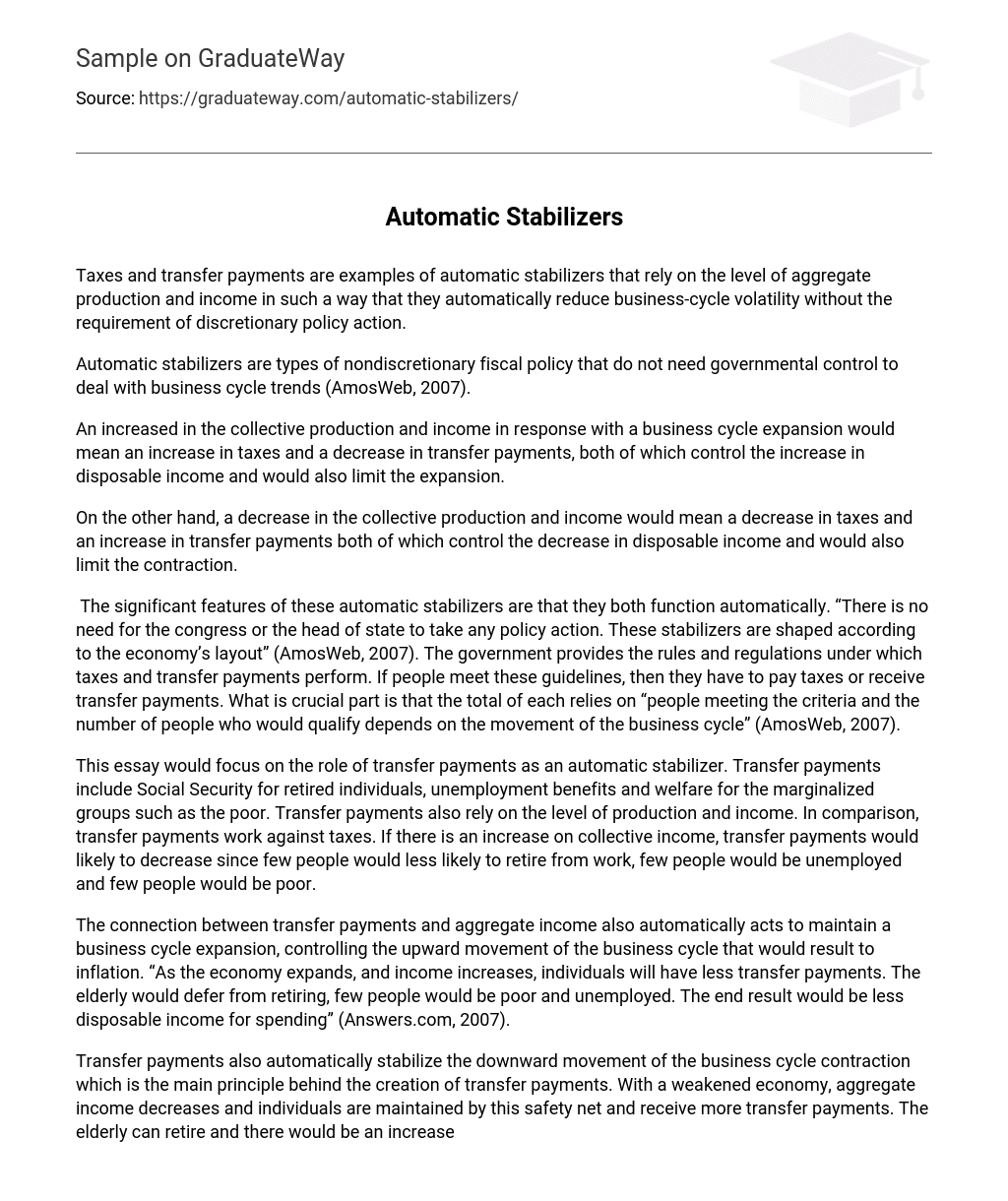Taxes and transfer payments are examples of automatic stabilizers that rely on the level of aggregate production and income in such a way that they automatically reduce business-cycle volatility without the requirement of discretionary policy action.
Automatic stabilizers are types of nondiscretionary fiscal policy that do not need governmental control to deal with business cycle trends (AmosWeb, 2007).
An increased in the collective production and income in response with a business cycle expansion would mean an increase in taxes and a decrease in transfer payments, both of which control the increase in disposable income and would also limit the expansion.
On the other hand, a decrease in the collective production and income would mean a decrease in taxes and an increase in transfer payments both of which control the decrease in disposable income and would also limit the contraction.
The significant features of these automatic stabilizers are that they both function automatically. “There is no need for the congress or the head of state to take any policy action. These stabilizers are shaped according to the economy’s layout” (AmosWeb, 2007). The government provides the rules and regulations under which taxes and transfer payments perform. If people meet these guidelines, then they have to pay taxes or receive transfer payments. What is crucial part is that the total of each relies on “people meeting the criteria and the number of people who would qualify depends on the movement of the business cycle” (AmosWeb, 2007).
This essay would focus on the role of transfer payments as an automatic stabilizer. Transfer payments include Social Security for retired individuals, unemployment benefits and welfare for the marginalized groups such as the poor. Transfer payments also rely on the level of production and income. In comparison, transfer payments work against taxes. If there is an increase on collective income, transfer payments would likely to decrease since few people would less likely to retire from work, few people would be unemployed and few people would be poor.
The connection between transfer payments and aggregate income also automatically acts to maintain a business cycle expansion, controlling the upward movement of the business cycle that would result to inflation. “As the economy expands, and income increases, individuals will have less transfer payments. The elderly would defer from retiring, few people would be poor and unemployed. The end result would be less disposable income for spending” (Answers.com, 2007).
Transfer payments also automatically stabilize the downward movement of the business cycle contraction which is the main principle behind the creation of transfer payments. With a weakened economy, aggregate income decreases and individuals are maintained by this safety net and receive more transfer payments. The elderly can retire and there would be an increase in the unemployment rate and the poor will likely need more financial assistance. The effect would be that there would be more disposable income to spend.
References
Barron’s Financial and Investment Dictionary (2006).Automatic Stabilizers. Accessed December 4, 2007. http:// www.answers.com/topic/automatic-fiscal-stabilizers.html
Automatic Stabilizers (2007). Accessed December 4, 2007. http://www.amosweb.com.html
Automatic Stabilizers (2007). Accessed December 4, 2007. http://www.investorword.com/342/automatic stabilizers.com.html





